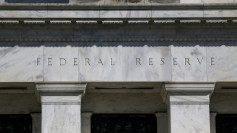Wholesale prices in the United States rose more than expected in April, signaling persistent inflationary pressures and complicating the Federal Reserve's plans for potential interest rate cuts. The producer price index (PPI), which measures the prices producers receive for their goods, increased by 0.5% for the month, surpassing the 0.3% estimate from Dow Jones, according to data released by the Labor Department's Bureau of Labor Statistics on Tuesday.
This uptick in the PPI follows a revision of March's figures, which were adjusted from an initially reported 0.2% gain to a 0.1% decline. Stripping out the volatile food and energy prices, core PPI also rose by 0.5%, higher than the 0.2% estimate. This marks the highest monthly increase in core PPI since April 2023. Excluding trade services, the core PPI showed a 0.4% monthly rise and a 3.1% year-over-year increase.
The year-over-year data indicated a 2.2% rise in wholesale inflation, the highest in a year, while core PPI inflation was at 2.4%, the largest annual increase since August 2023. These figures align with estimates from Reuters but highlight the ongoing inflationary pressures within the economy.
"Sticky inflation looked downright stuck this morning after a much hotter-than-expected inflation reading," noted Chris Larkin, managing director of trading and investing at E-Trade from Morgan Stanley. He added that despite the revised lower figures for March, the April report still posed concerns about inflation.
Services prices played a significant role in driving the wholesale inflation, with a 0.6% increase accounting for about three-quarters of the headline gain. This marks the largest monthly rise in services prices since July 2023. Notably, portfolio management costs surged by 3.9% in April, contributing to the services price increase.
Goods prices measured by the PPI rose 0.4%, reversing a 0.2% decline from the previous month. This was primarily driven by a 2% increase in the energy index, which included a 5.4% jump in gasoline prices. Conversely, the final demand index for food fell by 0.7%.
The latest inflation data arrives as the Federal Reserve maintains a cautious stance on interest rates. Fed policymakers have expressed a need for more evidence that inflation is trending lower towards the central bank's 2% target before considering rate cuts. Recent data points have not been encouraging, with the consumer price index (CPI) and the Commerce Department's personal consumption expenditures price index both showing higher-than-expected gains in early 2024.
The New York Fed's monthly survey, released Monday, indicated that consumer expectations for inflation remain elevated, with the one-year outlook at 3.3%, the highest since November. This increase is largely driven by expectations of rising housing-related costs.
The CPI, which measures prices paid by consumers, is set to be released on Wednesday and is expected to show a 0.4% rise in April from the previous month, with a 3.4% increase year-over-year. Both the PPI and CPI are critical indicators of inflation and are closely watched by the Fed.
The persistent inflationary pressures have placed significant financial burdens on U.S. households, particularly lower-income families who spend a larger portion of their income on essentials such as rent, groceries, and gasoline. These price hikes reduce their financial flexibility and savings potential.
The mixed inflation data has led to uncertainty in financial markets. Stock futures showed little movement following the PPI report, while Treasury yields were mixed. The CME FedWatch tool suggests a 91.1% probability that the Federal Reserve will keep interest rates unchanged in June, with a potential rate cut in September appearing less certain.
"If the CPI also comes in above expectations, the interest rate picture may be thrown into doubt," Larkin commented. He noted that more hot inflation data could disrupt previous investor expectations of multiple rate cuts in 2024.






